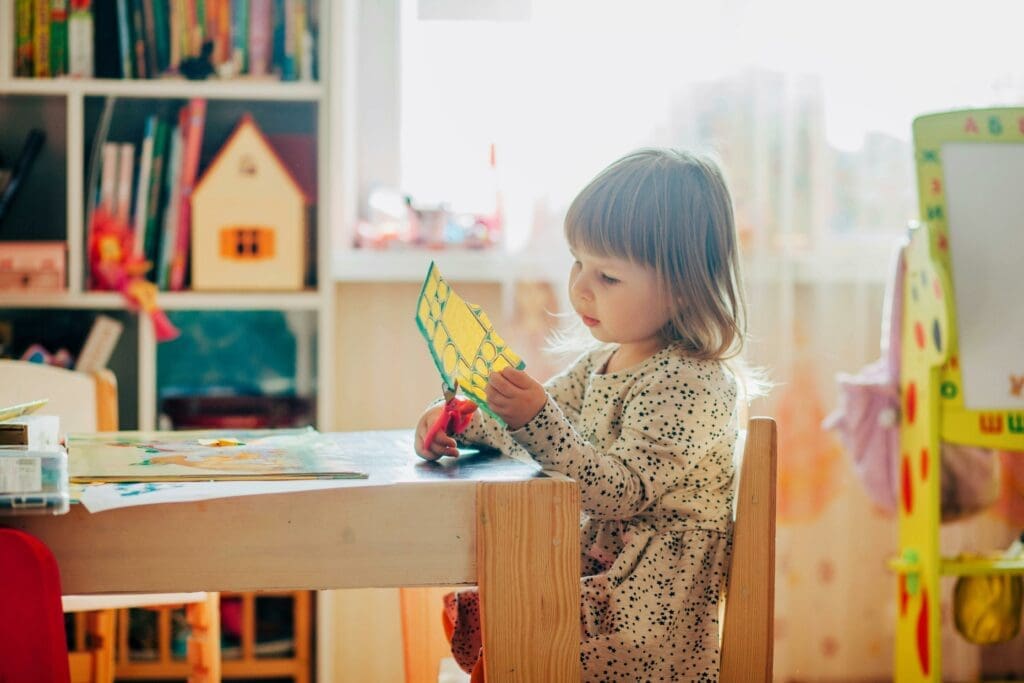Toddler bedtime, a nightly adventure filled with negotiation and patience, often poses a challenge for parents seeking tranquil evenings. Within the remarkable journey of parenthood, marked by heartwarming moments, laughter, and boundless love, lie challenges that every parent grapples with. Among these challenges, one of the most universal struggles emerges: the nightly ritual of coaxing a resistant toddler into bed.
If you find yourself locked in a seemingly perpetual bedtime battle, where the mere mention of sleep transforms your tranquil household into a battleground, take solace in the fact that you are not alone. Countless parents share in the triumphs and tribulations of convincing their energetic toddlers that bedtime is, indeed, a friend and not a foe.
In this article, we embark on a journey to uncover natural remedies that extend an olive branch to exhausted parents, promising to transform the bedtime battlefield into a haven of tranquility. Together, we’ll explore effective strategies that encourage your toddler to fall asleep faster and lay the foundation for a serene and restful bedtime experience, creating cherished moments for you and your little one.

Create a Calming Bedtime Routine
Creating a calming bedtime routine is akin to crafting a gentle lullaby that guides your toddler seamlessly from the animated world of play to the tranquil realm of dreams. The significance of this nightly ritual goes beyond merely preparing for sleep; it becomes a sacred time of bonding and comfort between parent and child. Imagine it as a cherished prelude to a restful night, a magical moment where the hurly-burly of the day begins to fade, making room for a peaceful transition.
The choices you make during this routine can be transformative, setting the stage for a serene bedtime experience. Delving into activities that promote relaxation, such as the warm embrace of a bath, the tender strokes of a gentle massage, or the enchanting tales spun during a favorite bedtime story, becomes a soothing symphony that resonates with your toddler’s senses.
As we explore crafting a bedtime routine, remember that consistency acts as the guiding melody. By maintaining a rhythm that echoes each night, you send a reassuring signal to your toddler, gently whispering that it’s time to wind down and embrace the tranquility of sleep. It provides gentle reassurance that it is safe for your toddler to stay in bed. This ritual paves the way for a faster and more seamless transition to bedtime and becomes a treasured tradition that strengthens the parent-child bond, creating a cocoon of security and comfort for your little one.
Optimize the Sleep Environment
Optimizing your toddler’s sleep environment is akin to crafting a cocoon of tranquility that wraps them in a peaceful embrace, paving the way for a night of restful slumber. Beyond merely providing a bed for your little one, the sleep space becomes a haven of comfort, carefully curated to cocoon them in serenity.
Imagine nurturing dreams and gently dissipating the day’s stresses, creating a sanctuary where your toddler can drift into a sea of peaceful sleep. As the architect of this haven, your first consideration should be the ambient conditions of the room. Ensure it is cool, creating an atmosphere conducive to deep, undisturbed sleep.
The importance of darkness cannot be overstated; it’s the canvas on which the dreams unfold. Invest in blackout curtains, shielding your toddler’s sanctuary from intrusive external light that might disrupt the delicate dance of sleep. In the symphony of the night, disruptive sounds can be jarring notes. Here, the white noise machine emerges as a silent maestro, drowning out the cacophony of the outside world and orchestrating an environment of auditory peace.
Crafting this serene setting is not just about aesthetics; it’s a cornerstone for facilitating a faster and more peaceful transition to sleep. The comfort and invitation emanating from this sleep environment create a psychological sanctuary, signaling your toddler that bedtime is a time of solace and security. In this environment, dreams flourish, and your toddler is cocooned in the gentle arms of undisturbed slumber, fostering a good night’s sleep and a foundation of well-being and tranquility.
Introduce a 5-Hour Wake Window
Unlocking the secrets of your toddler’s sleep patterns is akin to deciphering the gentle cadence of a lullaby, a melody that, when harmonized correctly, orchestrates a seamless transition from wakefulness to rest. Recognizing the ebb and flow of your child’s energy levels throughout the day is key to unlocking the doorway to a peaceful bedtime routine.
Enter the 5-hour wake window concept, a beacon that guides parents through the intricate dance of toddler sleep. Understanding the rhythm of your toddler’s natural sleep patterns is not merely a parental curiosity but a profound insight into the delicate art of fostering optimal sleep. You embark on a delicate balancing act by maintaining a 5-hour wake window, that sacred interval between the conclusion of their nap and the arrival of bedtime. It is a balance that ensures your toddler is sufficiently fatigued to embrace sleep eagerly but not excessively drained, which could provoke bedtime resistance akin to a tangle of rebellious notes in a carefully orchestrated symphony.
This intentional wake window bridges the realms of wakefulness and slumber, a corridor where your toddler traverses with ease, guided by the gentle hand of a well-regulated circadian rhythm. In this harmonious dance, your little one becomes attuned to their body’s signals, seamlessly transitioning from playtime’s vibrancy to bedtime’s tranquility.
The 5-hour wake window emerges not as a restrictive timetable but as a gentle guide, ensuring that your toddler’s energy levels align with the cadence of a night of restful sleep. By integrating this understanding into your bedtime routine, you empower your child to embrace sleep willingly, like a dancer gracefully yielding to the final notes of a melodious composition.
It is a subtle yet potent approach that fosters timely sleep and nurtures a positive association with bedtime, transforming it from a battleground into a serene prelude to a night filled with sweet dreams.
Incorporate Relaxing Bedtime Activities
Delving into bedtime activities with your toddler is akin to orchestrating a gentle prelude to a night filled with sweet dreams. The moments leading up to bedtime are not just a routine but an exquisite ballet of relaxation and tranquility. During this time, the hustle and bustle of the day gradually give way to the soothing rhythm of winding down, creating an atmosphere conducive to a peaceful transition into the realm of sleep.
Central to this symphony of bedtime tranquility is incorporating relaxing activities, carefully curated to invite serenity into your toddler’s world. Picture a soothing bath, a sanctuary where the warmth of the water not only cleanses but also serves as a gentle balm, relaxing your little one’s muscles and unwinding the remnants of their day’s adventures.
This ritual becomes a sacred pause, a moment for both parent and child to share in the quietude of the evening. Consider infusing this bath time with the calming scent of lavender, renowned for its sleep-inducing properties. Like a fragrant lullaby, lavender gently nudges your toddler’s senses toward a calm state, paving the way for a more serene transition to sleep. The olfactory magic of lavender becomes a whispered promise of restfulness, setting the stage for a night filled with peaceful dreams.
Moreover, as the evening unfolds, engage in gentle and slow-paced activities. These can range from soft play to storytelling, allowing your toddler to gradually wind down in an organic and unhurried manner. By incorporating these activities, you create a gentle crescendo toward bedtime, fostering an environment where the frenetic energy of playtime transforms into the soothing cadence of bedtime rituals.
In the realm of relaxing bedtime activities, each moment becomes a brushstroke on the canvas of your toddler’s evening, painting a picture of calmness and comfort. As you navigate this delicate dance leading up to bedtime, remember that these moments are not just a means to an end but a cherished part of the day’s narrative, forming the foundation for a peaceful night’s sleep and a treasure trove of precious memories.
Avoid Stimulating Screens Before Bed
Nurturing a tranquil bedtime routine for your toddler is akin to orchestrating a delicate sonata, where each note resonates with the promise of a restful night’s sleep. In the modern age, where screens are omnipresent, it becomes imperative for parents to be mindful of the impact of technology on their child’s sleep hygiene. As the evening descends and bedtime approaches, the allure of screens from TVs, tablets, or smartphones can cast a captivating spell. Yet, achieving true harmony in a peaceful bedtime routine requires resisting this temptation.
The scientific rationale behind avoiding stimulating screens before bedtime is rooted in the disruptive effects of blue light emitted by these devices. While captivating, this blue light can play havoc with the body’s natural production of melatonin, the sleep-inducing hormone. As the artificial glow of screens permeates the room, it signals to the brain that it’s still daytime, hindering the natural wind-down process that precedes bedtime.
To preserve the sanctity of the pre-sleep period, it’s essential to institute a digital curfew at least an hour before bedtime. This intentional break from screens becomes a crucial interlude, allowing your toddler’s mind to disentangle from the constant stimulation and immerse itself in the gentle cadence of the impending night.
Instead of screen time, encourage activities that promote relaxation and set the stage for a tranquil transition to sleep. Engaging in quiet pastimes such as coloring, where the gentle stroke of crayons on paper becomes a soothing rhythm, fosters a sense of calm. Alternatively, introducing soft music into the evening routine provides an auditory cocoon, guiding your toddler toward a state of serenity.
As you navigate the delicate balance between technology and bedtime, consider this screen-free hour a sacred pause, a moment of respite from the digital deluge of the day. In doing so, you gift your toddler the opportunity to immerse themselves in the serenity of the evening, untethered from the dazzling glow of screens and ready to embrace the serenity of a peaceful night’s sleep.
Avoid Melatonin Supplements
While the market is replete with melatonin supplements marketed as a quick fix for sleep issues, it’s crucial to approach them with caution, especially when it comes to toddlers. Melatonin assists in falling asleep, but its efficacy in maintaining a deep and uninterrupted slumber is questionable and may even contribute to middle-of-the-night wake-ups.
External factors can disrupt a toddler’s delicate sleep cycle, and introducing supplements may interfere with their natural sleep-wake cycle. It’s advisable to consult with a pediatrician before considering melatonin for your toddler, as there might be underlying factors contributing to sleep issues that need a tailored approach.
Encourage Comfort Items
Fostering a sense of security and comfort is essential to crafting a bedtime sanctuary for your toddler. Amidst the tender tapestry of nighttime rituals, one notable thread weaves through the introduction of comfort items. For many toddlers, these items transcend mere possessions; they become cherished companions that hold the power to transform the bedtime experience into a soothing ritual of solace.
Acknowledging and encouraging your child’s attachment to a special stuffed animal or a cozy blanket is more than just a sentimental gesture; it’s a profound acknowledgment of their need for comfort and reassurance. Every bedtime becomes a miniature journey into tranquility when your toddler is empowered to choose their comfort item. This act of selection empowers them, fostering a sense of autonomy and control over their bedtime environment. Whether it’s a plush teddy bear with stitched eyes that twinkle like stars or a worn-in blanket that carries the fragrance of familiarity, these chosen companions hold the key to unlocking a world of reassurance.
The significance of comfort items lies in their physical presence and the emotional anchor they provide. As your toddler snuggles with their chosen item, the tactile comfort becomes a tangible expression of security, creating a cocoon of reassurance in the darkness of the night. This simple act transcends the object’s materiality; it becomes a conduit for emotions, a vessel for the warmth of familiarity that envelops your child as they embark on their nightly journey into dreams.
In encouraging these comfort items, you bestow upon your toddler a silent confidant, a loyal companion that remains steadfast through the night. The bedtime experience undergoes a transformation, evolving from a mere routine into a cherished ritual marked by a sense of comfort and emotional safety. This intentional acknowledgment of your child’s need for reassurance makes the bedtime experience more enjoyable. It lays the foundation for a positive and comforting association with sleep, fostering emotional well-being and tranquility in the tender moments before dreams unfold.
Implement Positive Sleep Associations
Transforming bedtime from a mere necessity into a cherished and calming ritual involves more than just falling asleep; it’s about cultivating positive sleep associations that weave joy and comfort into the fabric of your toddler’s nighttime routine.
Each bedtime becomes a canvas where you, as the orchestrator of this soothing symphony, paint strokes of delight, creating an environment where sleep is not just a necessity but an eagerly anticipated and pleasurable experience. The foundation of positive sleep associations lies in intentionally infusing enjoyable elements into the bedtime routine. Think of it as crafting a bespoke lullaby unique to your child’s preferences and sensitivities. This could involve playing a favorite lullaby, the gentle melody becoming a comforting backdrop to the transition from wakefulness to slumber.
The harmony of familiar tunes serves as an auditory cue and a soothing balm, wrapping your toddler in a cocoon of tranquility. Introducing a soft nightlight into the bedtime tableau adds another layer of comfort. As the room gently bathes in the muted glow, it provides a visual reassurance, banishing the shadows that might evoke fears in a young mind. This soft illumination becomes a beacon of comfort, guiding your toddler into the realm of dreams with a sense of security. Additionally, a brief cuddle before bedtime is a poignant bridge between the day’s activities and the embrace of sleep.
The warmth and affection exchanged during this moment become treasured fragments of connection, creating a positive emotional association with bedtime. This act transcends the physical; it affirms love and security, reinforcing the bedtime routine as a safe harbor for your little one. These enjoyable elements are not mere embellishments but integral components that help build a positive connection between sleep and pleasant experiences.
As you intertwine these harmonious threads into the bedtime narrative, you are not merely settling your toddler to sleep but creating a symphony of comfort, joy, and love that resonates throughout the night. This intentional approach to positive sleep associations transforms bedtime into a delightful ritual and lays the foundation for a lifetime of positive associations with sleep, fostering emotional well-being and tranquility in the tender moments before dreams unfold.
Navigating the challenge of a toddler who won’t stay in bed requires patience, understanding, and a willingness to explore different approaches. By incorporating these natural remedies into your bedtime routine, you can create an environment that encourages faster and more restful sleep for your little one. Remember, every child is unique, so be flexible and open to adjusting your approach until you find what works best for your family. Sweet dreams await!





